
Domestic
12:13, 26-Mar-2019
Reporter's Diary: My takeaway from the Xiangshui chemical plant explosion
Updated
13:54, 26-Mar-2019
By Xu Mengqi
02:46
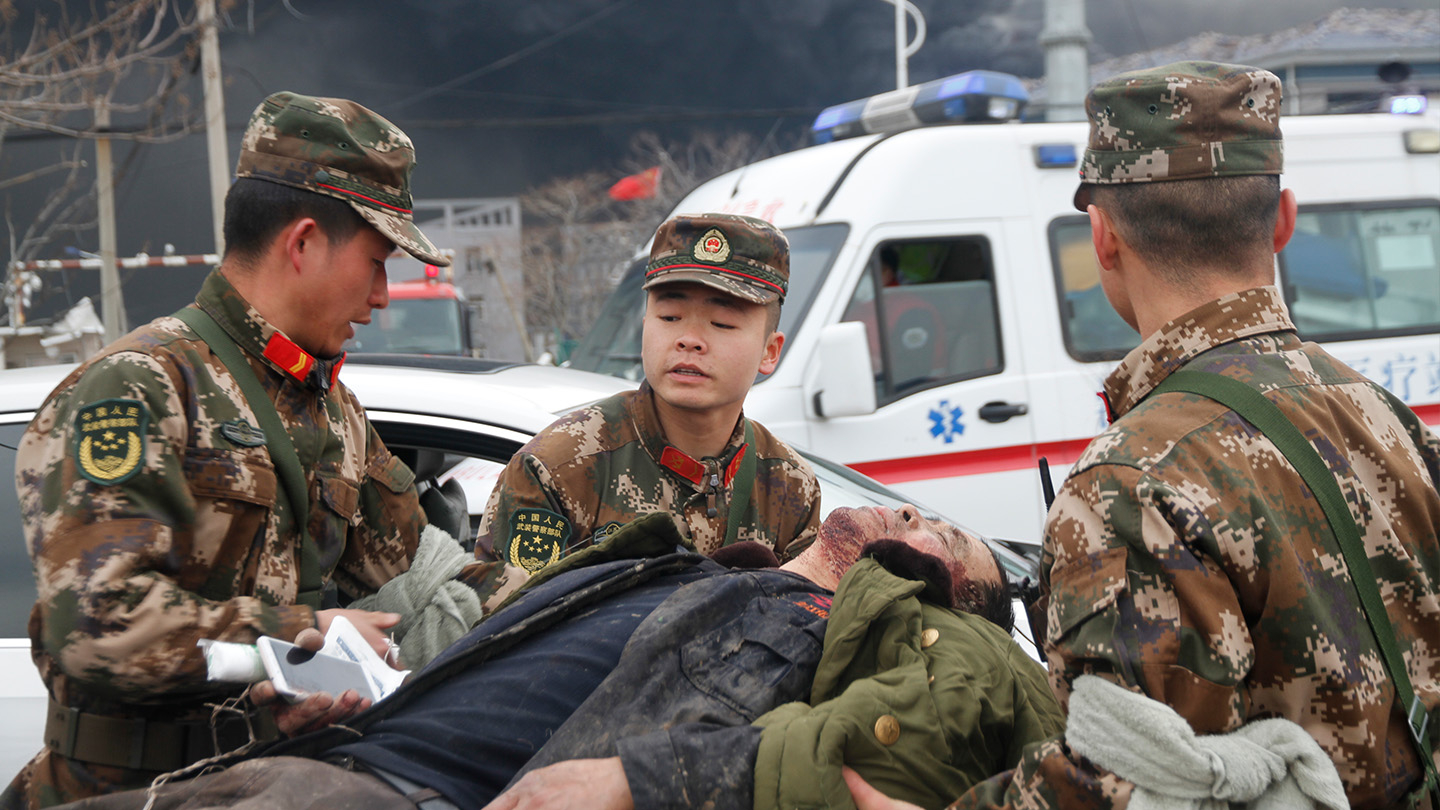
Five days after one of China's deadliest industrial explosions, order seems to have returned to Xiangshui County in east China's Jiangsu Province as rescue work nears its completion. The death toll stands at 78, according to latest data released on Monday.
Various media outlets have already started to retreat, and the incident might soon lose public attention, but as I am writing this article, 78 families are grieving their loss and another 79 are wrestling with the possibility that their severely injured loved ones will be disabled for life. And what perhaps cannot be captured in numbers is the lasting scar etched in the collective memory of the Xiangshui residents.
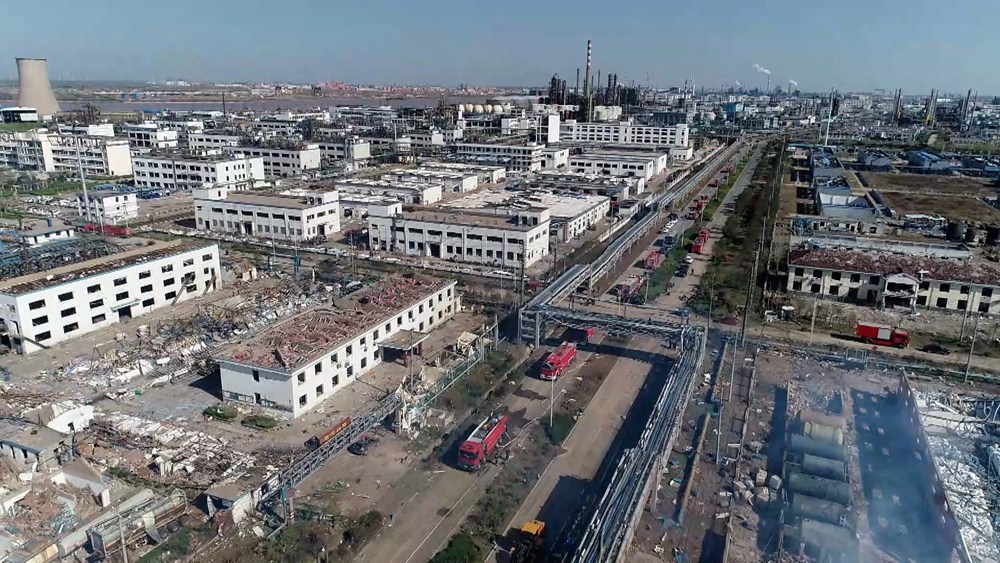
Firefighter trucks lined up in the affected industrial park. /Photo courtesy of Zhang Dongdong
Firefighter trucks lined up in the affected industrial park. /Photo courtesy of Zhang Dongdong
Xiangshui is a county with a population of around 600,000. It's also said to be one of the least developed counties in the generally thriving Jiangsu Province.
In a desperate effort to develop, Xiangshui and other nearby counties started building industrial parks and housing chemical plants that were desperate to relocate as the "green revolution" in more economically developed regions left little space for them to survive.
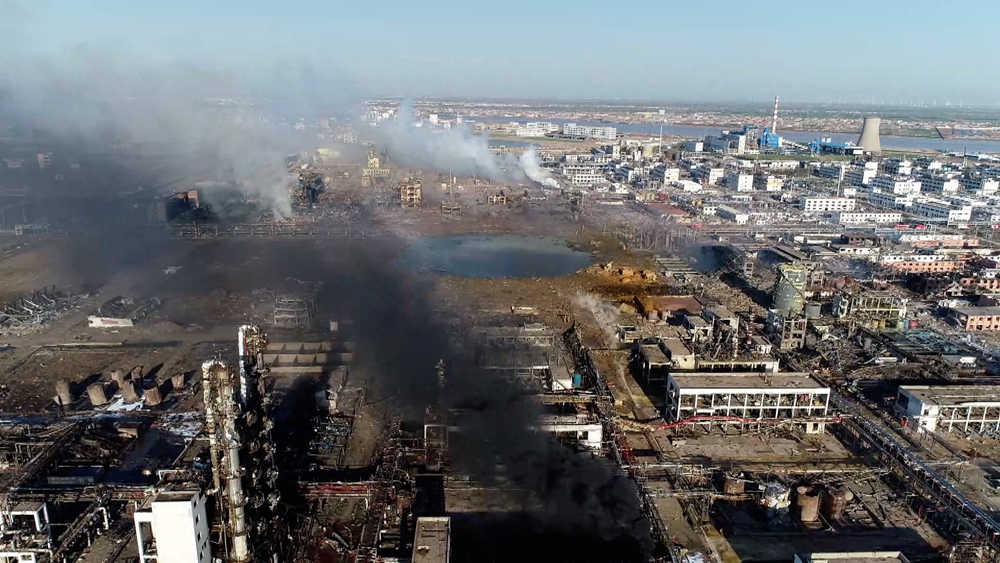
The blast in the industrial park created a huge crater. /Photo courtesy of Zhang Dongdong
The blast in the industrial park created a huge crater. /Photo courtesy of Zhang Dongdong
The chemical industrial parks are undoubtedly major contributors to local tax revenues. But the grave risks they carried were also too obvious to ignore.
Just a little over a year ago, in the wake of another chemical explosion in a neighboring city, authorities conducted a safety examination of 18 chemical plants around this area and the Jiangsu Tianjiayi Chemical Co. plant, the site of last week's tragedy, was found to have 13 safety hazards. It was temporarily shut down for causing environmental pollution.
The memory of local villagers, however, goes way back.
In 2007, another blast in the same industrial park where Tianjiayi's plant is located, killed eight and injured dozens. In 2010, a chlorine leak left many poisoned.
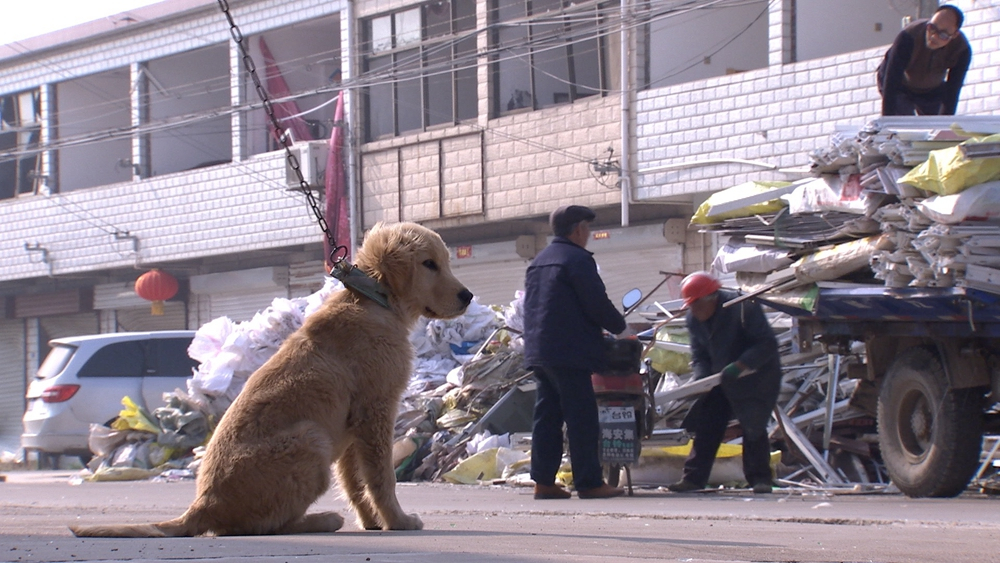
Villagers clean up door and window frames damaged by the blast. /CGTN Photo
Villagers clean up door and window frames damaged by the blast. /CGTN Photo
The existence of the chemical plants posed a dilemma for the local residents as well.
"It's easier for us to make money, to be close to factories, so we can take care of our children at home," said one villager whose aunt was killed in the explosion.
"We all know it's chronic suicide to work in a chemical plant, but I had no choice. This was the job I took," another villager Wu Liliang told me as he showed me his finger nails tinted in bright yellow because of the chemicals the factory where he works was producing.
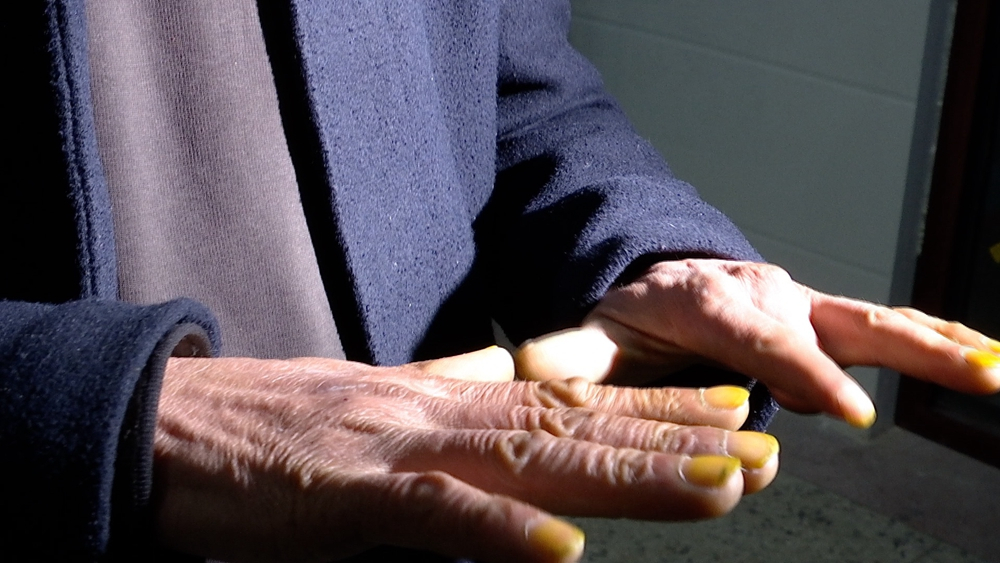
Wu Liliang shows his chemically colored finger tips. /CGTN Photo
Wu Liliang shows his chemically colored finger tips. /CGTN Photo
The 62-year-old man had been working in one of the factories in the affected industrial park for six years. He said that multiple accidents had led local authorities to inspect the chemical plants from time to time, but in the interim, it's a cat-and-mouse game.
"The factories all operate secretly. If we are working and the inspectors come, they'll say hurry, shut down the factory, and we hide ourselves so the inspectors won't see us."
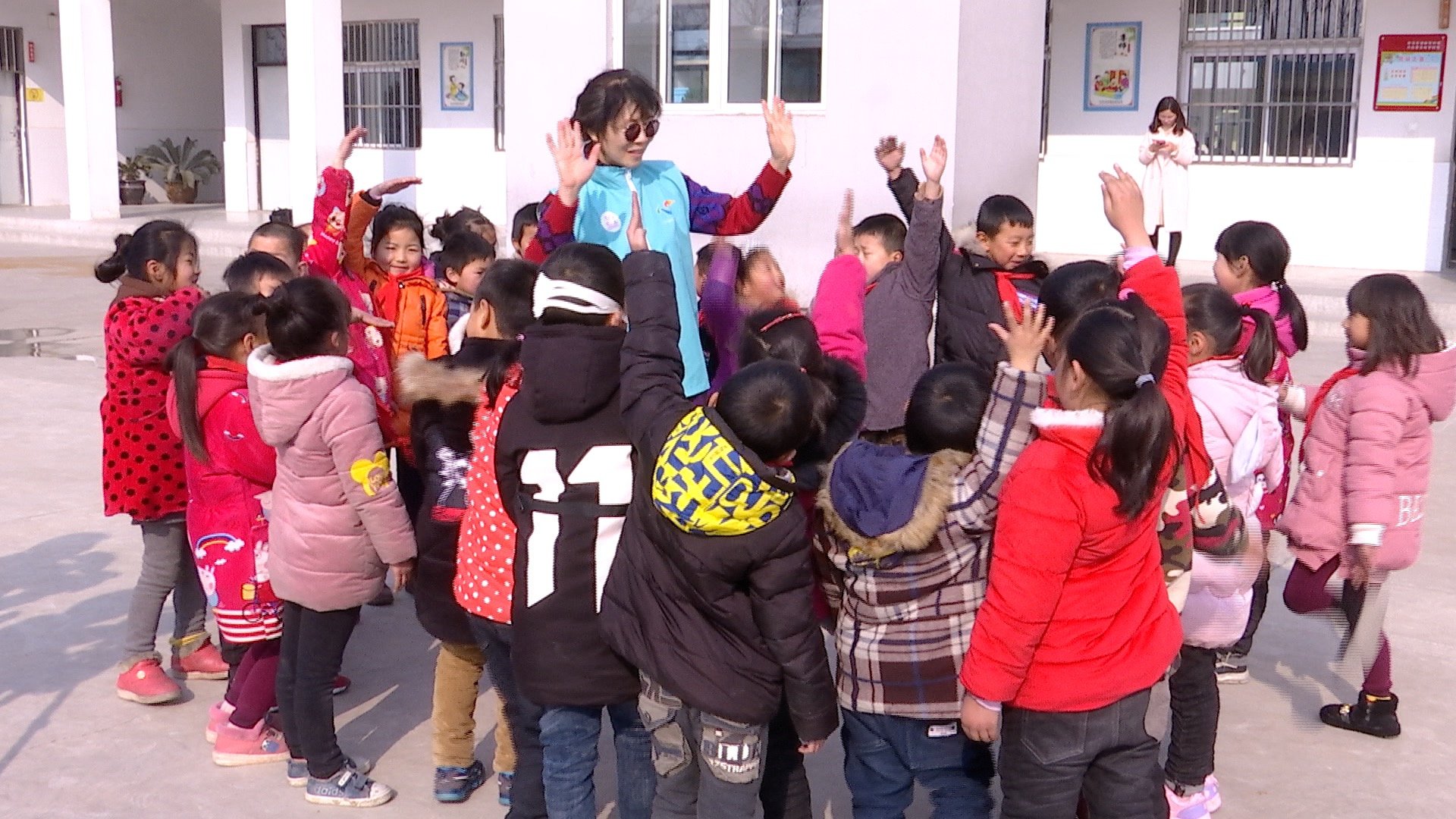
A psychological counselor plays games with children at a primary school. /CGTN Photo
A psychological counselor plays games with children at a primary school. /CGTN Photo
Wu said during previous minor accidents he had felt lucky that it wasn't his plant, but this time, he wishes the industrial park would be gone. He said he would rather be begging on the streets than working in there.
Four days after the incident, schools had already opened, after authorities confirmed that air quality is within the normal range.
Psychological counselors were brought in to help children make sense of what happened.
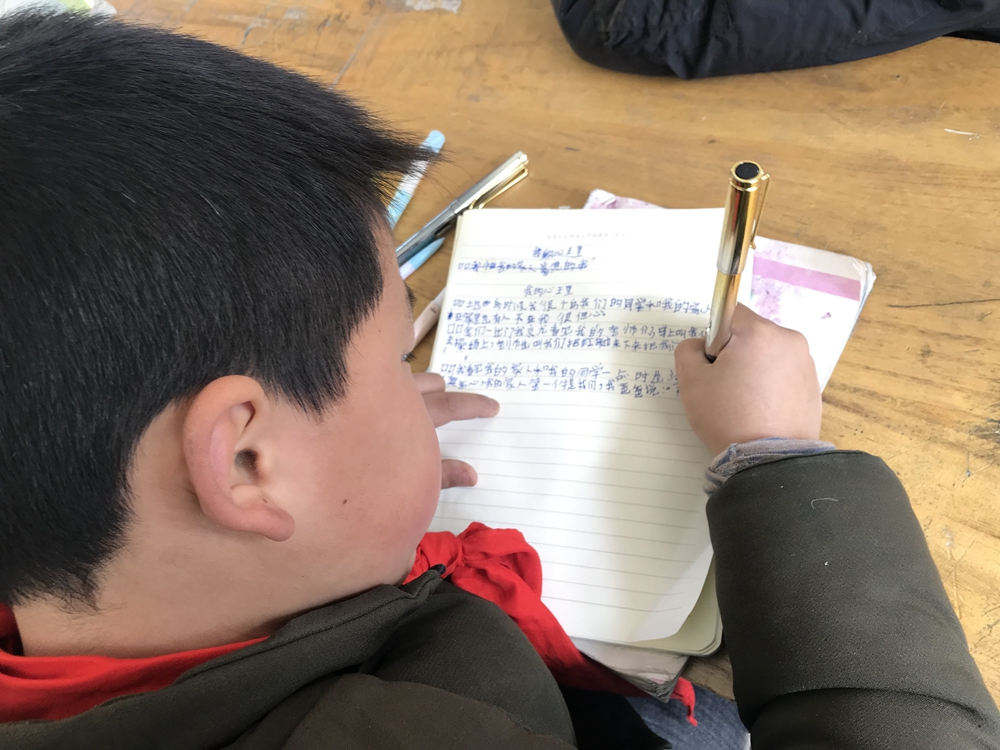
A primary school student recounts what happened on day of the accident in an essay. /CGTN Photo
A primary school student recounts what happened on day of the accident in an essay. /CGTN Photo
In one of the classes, a teacher reassured his pupils that "storms are often followed by sunshine."
But as disaster relief work goes on, and the full environmental impact of chemical leaks resulting from this accident awaits further investigation, it may take years before the innocent children can fully understand what the storm had really meant.
(Top image: A survivor of Xiangshui explosion is being transferred to an ambulance by soldiers. /Photo courtesy of Zhang Dongdong)

SITEMAP
Copyright © 2018 CGTN. Beijing ICP prepared NO.16065310-3
Copyright © 2018 CGTN. Beijing ICP prepared NO.16065310-3